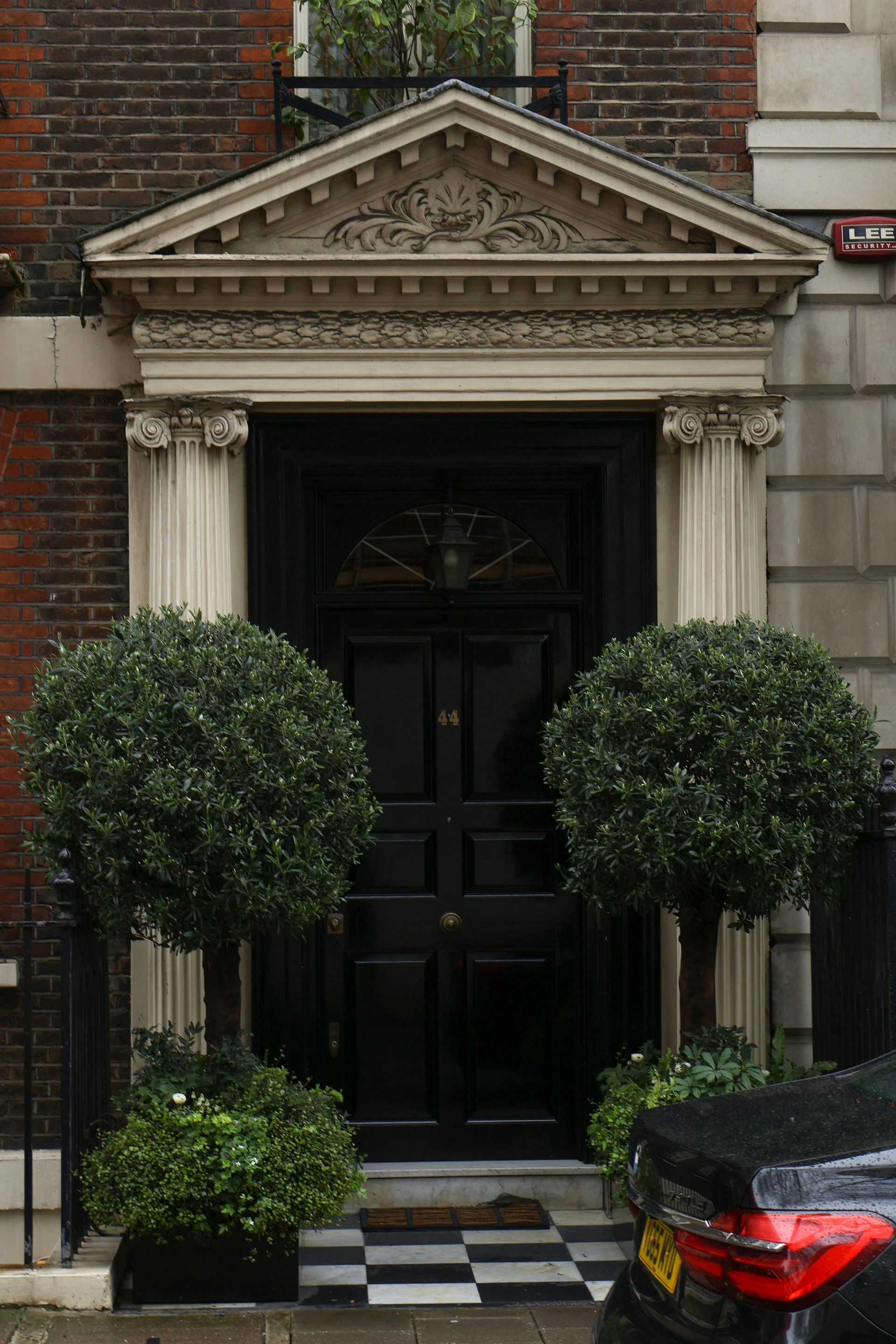Key Highlights
- Sales Activity: Transaction volumes
remain subdued in prime London. In the first half of 2025, completed sales were ~6% lower than H1 2024mpamag.com. June in particular saw
27% fewer sales than the previous Junempamag.com. However, there are signs of life:
July 2025 saw the busiest month for sales agreed since 2020, with deal numbers about
8% higher than last yearrightmove.co.uk. Knight Frank likewise notes buyers returning – the ratio of new buyers to new listings rebounded to 6.7:1 in July (up from a lull of 5.1:1 in April)knightfrank.co.uk – indicating demand is cautiously improving.
- Supply & Pricing:
Inventory has swollen, tilting the market in buyers’ favor. By mid-summer, there were
10–20% more homes on the market in London’s prime areas than a year earliermpamag.comrightmove.co.uk. Available stock is now at a
decade-high level nationallyreuters.com. Many sellers have had to adjust expectations: roughly
41% of prime properties sold in June had a price reduction prior to salempamag.com. The
average discount from initial asking price is running ~8–9%mpamag.com. Indeed, about
one-third of all listings are currently reduced from their original asking – one of the highest proportions on record for this time of yearreuters.com.
- Market Drivers: Several
headwinds have weighed on PCL. Tax changes are a key factor – April’s increase in stamp duty on additional properties and the reform of “non-dom” tax status have dampened investor and overseas buyer appetitewillowprivatefinance.co.uk. Knight Frank attributes the PCL slowdown partly to these policies causing some wealthy foreign buyers to
exit or hold off on London purchaseswillowprivatefinance.co.uk. At the same time, the
interest rate environment has started to improve: the Bank of England’s rate cuts earlier in 2025 (most recently in August) have brought typical mortgage rates down to ~4.5%, from ~5.2% a year agoreuters.com. While borrowing costs are still relatively high, affluent buyers are seeing lenders become more competitive – some five-year fixed rates dipped below 4% for low-risk high-net-worth borrowers by Julywillowprivatefinance.co.uk. This easing in financing conditions, alongside clearer signs that prices have adjusted, is gradually
lifting buyer sentiment.
- Prime Lettings: The
rental market remains robust. Demand for prime London rentals has stayed extremely strong – fueled by factors like corporate relocations and frustrated would-be buyers – pushing rents up
~5–6% year-on-yearwillowprivatefinance.co.ukmpamag.com. In fact, rents in prime areas are now ~35% higher than pre-pandemic levelswillowprivatefinance.co.uk. Rising rents and low yields on alternative investments have led some discretionary sellers to
let their properties instead of selling cheaplywillowprivatefinance.co.ukwillowprivatefinance.co.uk. The uptick in rental supply (prime rental listings were ~9–23% higher this summer vs last year)willowprivatefinance.co.ukmpamag.com is slightly easing the crunch, but overall tight rental conditions mean
landlords can achieve higher yields, providing a silver lining amid higher interest rates.
Price Trends & Values in PCL
After several years of lackluster growth,
prime central London prices are in a modest correction. Both major consultancies report low single-digit annual declines. According to Knight Frank,
average PCL sale prices in July 2025 were ~3% lower than a year priorknightfrank.co.uk. Savills data for Q2 tells a similar story: PCL values fell
3.7% year-on-year (and –1.5% quarter-on-quarter) as of Junetheintermediary.co.uk. This marks the steepest annual drop in prime London since 2019willowprivatefinance.co.uk, ending the gentle recovery seen in 2021–2022.
It’s notable that
prime outer London (POL) – the high-end neighborhoods outside the central Zone 1 core – has been
more resilient. Outer prime prices were roughly
flat to +0.5% YoY through mid-2025knightfrank.co.uktheintermediary.co.uk, even inching up in some family-favorite areas. For example, pockets of West and Southwest London have still seen slight annual gains (e.g.
Wimbledon +3.4%, Putney +2.5% YoY through Q2) as domestic demand remains steady in those locationswillowprivatefinance.co.uk. This divergence underscores a theme:
central postcodes dependent on investor and overseas money have softened, while leafier outer districts driven by domestic end-users are holding firmer.
In
historic context, today’s prime London prices look relatively cheap. Knight Frank notes that
PCL values are ~20% below their last peak (August 2015) in nominal termsknightfrank.co.uk. Savills similarly finds prime central homes
≈21–22% below their 2014 peak (or over –40% in real terms after inflation)theintermediary.co.uk. In Prime Outer London, prices are only ~7% off their 2016 highsknightfrank.co.uk. In short, after years of stagnation and recent falls,
PCL is the “best value” it has been in over a decade. As Savills observes, buyers are increasingly recognizing the
“historic value on offer” at these price levelstheintermediary.co.uk.
Markets tend to bottom when value hunters step in, and indeed there are hints that
pricing may be nearing a floor: LonRes data show
June saw a slight uptick in values vs Maympamag.com, and the average asking price
discount narrowed to 8.2% – the smallest gap this yearmpamag.com (indicating sellers who are transacting have adjusted to realistic pricing).
Sales Activity & Buyer Demand
Market activity in prime London has been sluggish in early 2025, but there are glimmers of a turnaround. Overall sales volumes have remained below-normal. Knight Frank reported that the number of transactions (exchanges) in PCL during Jan–July 2025 was
10% below the 5-year averageknightfrank.co.uk. Similarly, LonRes figures show
completed sales in H1 2025 were ~6% lower than H1 2024mpamag.com. The traditionally busy spring season underperformed –
June 2025 sales were down 27% year-on-year and ~18% below the pre-pandemic average for Junempamag.com. Many buyers, especially at the top end, sat on the sidelines amid economic uncertainty, lingering inflation, and speculation about tax changeswillowprivatefinance.co.uktheintermediary.co.uk. Early 2025 saw a palpable
“wait-and-see” mindset among affluent purchaserswillowprivatefinance.co.uk.
However,
beneath the surface, demand is gradually returning. Several forward-looking indicators turned positive going into the summer. For one,
properties going under offer have jumped – LonRes recorded a
+9% YoY increase in under-offers in Junempamag.com, and even noted that under-offer volumes were ~23% above the 2017–19 average, a strong signal of future salesmpamag.com. Knight Frank’s agents echoed this, reporting that
“buyers will jump on a property if it’s priced correctly”propertyindustryeye.com – well-priced homes are finding takers. The pool of hesitant buyers is starting to move: the number of new buyer registrations in prime London in Q2 edged above pre-pandemic normswillowprivatefinance.co.uk, and by July the ratio of buyer demand to supply had rebounded (about
6.7 new buyers per new listing in July, up from the lull in spring)knightfrank.co.uk.
Importantly,
serious buyers have re-engaged this summer, helped by improved mortgage rates and realistic pricing. In fact,
July saw the highest number of sales agreed for that month since 2020, according to Rightmove, as
sales agreed ran 8% above last year’s levelrightmove.co.uk. This suggests pent-up demand is beginning to translate into actual deals as buyers sense a window of opportunity.
It’s still a
buyer’s market, but sentiment is slowly shifting towards cautious optimism. Analysts note that many wealthy purchasers have “dry powder” – cash in hand and an eye on London – and they are
ready to strike when they perceive value or stabilitywillowprivatefinance.co.uk. That moment may be approaching. As one prime market commentator put it, confidence among buyers “lies just below the surface” and just needs a nudge – whether a slight mortgage rate drop, a tax clarification, or clear evidence that prices have bottomedwillowprivatefinance.co.uk – to trigger more activity. The late-summer uptick in offers and sales suggests
London’s prime sector may be turning a corner heading into autumn 2025, albeit graduallympamag.com.
Supply, Inventory & Pricing Dynamics
One of the defining features of the current market is
abundant supply. Prime London owners have been listing properties at an increasing rate, even as sales lag, leading to a
build-up of inventory. By the end of June,
new instructions were ~19% higher than the year prior, and total
available stock was up 13.3% year-on-yearmpamag.commpamag.com.
The trend holds nationally as well – Rightmove notes the number of homes for sale across the UK is about
10% higher than last summerrightmove.co.uk, putting total
for-sale inventory at its highest in 10 yearsreuters.com. In prime London, supply has even exceeded pre-Covid norms: the volume of listings is ~40% greater than in mid-2020 (when the market was just emerging from lockdown)mpamag.com. This
glut of choice for buyers has created
downward pressure on prices and increased competition among sellers.
As a result,
pricing realism is essential to achieve a sale in 2025. Many sellers have come to terms with this new reality. Industry data shows an unprecedented level of price adjustment in the prime segment: in June,
41.5% of properties sold had previously had their asking price reducedmpamag.com. Similarly, across the broader market,
roughly one-third of listings have a price cut on them – the highest share (for summer) in over a decade of recordsreuters.com.
Even with reductions, buyers are negotiating hard: the
average sale price is around 8–9% below the initial asking price in prime London, which actually
improved from earlier in the year (it was over 9% discount in Q1, now 8.2% in June)mpamag.com. This indicates that while buyers still command leverage, sellers who price correctly from the start are seeing deals happen faster. In fact, Rightmove reports that a well-priced property now finds a buyer in about
32 days on average, whereas an overpriced listing (that needs a reduction) takes
~99 days to sellrightmove.co.uk. In short,
the market is punishing over-ambitious pricing – realistic, value-driven pricing is the key to moving prime properties in the current climate.
The
oversupply situation has been driven by a few factors. Some discretionary owners who held off during pandemic years have finally decided to list. Additionally, changes in tax and regulations (discussed below) have prompted more landlords and overseas owners to put properties up for sale, increasing second-hand stockpropertyindustryeye.com. The good news is that new supply may be starting to slow – Zoopla notes a recent
slowdown in homes being listed for sale compared to earlier in the yearassets.ctfassets.net. But for now, buyers have plenty of options, and
competition among sellers will likely keep a lid on prices. This is classic
“buyer’s market” behavior: more stock and less frenzy means
buyers can afford to be choosy and price-sensitive, which is exactly what we’re seeing in PCL.
Buyer Profile Shifts & Market Influences
The
mix of buyers in prime central London has been shifting in response to market conditions. Notably,
domestic UK buyers have become relatively more active in 2025, while some international demand has pulled back. Savills observes that a
larger proportion of prime purchases are now by domestic end-users (owner-occupiers) taking advantage of the corrected pricestheintermediary.co.uk. These tend to be affluent London-based professionals or families in their 30s-40s who see a chance to trade up into areas that might have been unattainable a few years ago. Because they are buying primary homes, they’re less deterred by recent tax changes that mainly hit investors and overseas buyerswillowprivatefinance.co.uk. In fact, some
traditionally “elite” central districts (like Notting Hill), which have broad appeal to local buyers, have held their values much better than investor-driven pockets – a sign of domestic demand stepping upwillowprivatefinance.co.uk.
On the flip side,
overseas buyer demand has become more selective. It hasn’t vanished – far from it.
The weak pound sterling continues to offer a significant discount to those buying with U.S. dollars or Gulf currencies, effectively making prime London prices ~30% cheaper for those investors than at the last peakwillowprivatefinance.co.ukwillowprivatefinance.co.uk.
Accordingly, ultra-rich Americans and Middle Eastern buyers remain
active in the super-prime segment (e.g. £10m+ purchases) and have been among the most prolific closers of big-ticket deals in the past 18 monthswillowprivatefinance.co.uk. London’s appeal as a stable, prestigious safe-haven is intact for this cohort. However, recent UK policy changes have undoubtedly
tempered the overall volume of foreign buyers. The abolition of the indefinite “non-domiciled” tax status – now limiting it to a few years – means ultra-wealthy international residents can no longer shelter global income/assets in London long-termwillowprivatefinance.co.uk.
This, along with the
higher stamp duty surcharges on additional properties (5% from April, up from 3%), has eroded some of London’s tax advantage for overseas investorswillowprivatefinance.co.ukwillowprivatefinance.co.uk. As a result, some foreign owners are choosing to
sell and repatriate capital (or redirect it to more tax-friendly jurisdictions like Italy or Dubai)willowprivatefinance.co.uk. Indeed, agents report that
international sellers now make up a greater share of prime vendors than beforewillowprivatefinance.co.uk. This dynamic – overseas owners cashing out while domestic buyers step in – is creating opportunities for local purchasers to snap up prime assets at discounts. It’s a changing of the guard to an extent, with
UK domestic wealth quietly replacing some of the retreating global capital in the mid-tier prime market.
Apart from buyer demographics, other
influences on the PCL market include:
- Tax & Policy Changes: As noted, the UK government’s tax policy shifts in early 2025 have been pivotal. The stamp duty surcharge increase in April (from 3% to 5% on second homes/investments) immediately cooled investor demand in Q2willowprivatefinance.co.uk. Additionally, looming proposals to charge inheritance tax on worldwide assets of long-term non-doms have unnerved that segmentknightfrank.co.uk. Knight Frank directly attributes part of the central London slowdown to these measures, which led to an
“exodus” of some wealthy foreign residents and a more cautious mood among buyersknightfrank.co.ukknightfrank.co.uk. There is also chatter about potential new property taxes (such as a higher Council Tax for expensive homes or even a “mansion tax”) under the current government, which has injected a bit of uncertainty. However, industry experts like Knight Frank’s Tom Bill wryly note that after a decade of falling values,
“I’d be surprised if there was anything to tax in PCL from the last decade as prices have fallen 20%”primeresi.com – a reminder that the prime market hasn’t exactly been minting profits lately.
- Interest Rates & Economy: The macro-economic backdrop is mixed but improving. In the first half of 2025, high inflation and 14 consecutive Bank of England rate hikes (through 2024) cast a long shadow on buyer confidence. But by mid-2025 the tide turned – the Bank of England enacted
five rate cuts from August 2024 to August 2025, bringing the base rate down and easing mortgage costsreuters.com. Mortgage affordability metrics have improved: the average 2-year fixed rate is ~4.5% now vs 5.2% a year agoreuters.com, and crucially, regulators relaxed affordability tests, meaning buyers can borrow more for the same incomeassets.ctfassets.netassets.ctfassets.net. Zoopla estimates these changes boosted buying power by up to 20% for mortgage-dependent purchasersassets.ctfassets.net. While rates aren’t “low” by historic standards, the stabilization (and modest declines) in borrowing costs have
given buyers more confidence to proceed, especially as many expect no further steep rate shocks. Additionally, broader economic sentiment has improved with inflation coming off its peak and no major geopolitical surprises in recent monthsmpamag.com. As one LonRes analyst put it in July, “trade wars (and actual wars) appear more settled…and interest rates have edged lower… if this continues, there should be a boost to buyer confidence”mpamag.com. That said, any reversal – a resurgence of inflation or a harsh Budget – could quickly alter sentiment, so confidence remains
fragile.
- Currency Dynamics: As mentioned, currency is a double-edged sword. The
weak GBP is a magnet for dollar-rich buyers (North American, Middle Eastern, etc.), effectively giving them a ~30% discount on London prices compared to 2014 when the pound was strongerwillowprivatefinance.co.ukwillowprivatefinance.co.uk. This has been a quiet driver sustaining the very top of the market – for instance, a flurry of >£20m purchases by U.S. buyers has been recorded, making Americans the #1 foreign buyer group in PCL in 2024willowprivatefinance.co.uk. On the other hand, UK-based buyers do not enjoy this currency effect, and their purchasing power is more directly tied to domestic interest rates and incomes. Overall, the cheap pound underpins the
long-term investment case for PCL (for global buyers who take a 5–10 year view, London looks “on sale” in dollar terms). We may see currency-savvy investors step in more forcefully if they sense the market is bottoming out.
Prime Lettings Market Resilience
It’s worth touching on the
prime lettings market, which has been running on a very different trajectory. While sales struggled,
rentals have been red-hot. Knight Frank and LonRes data both show
prime London rents rising ~1.5–2% per quarter through late 2024 and 2025, translating to roughly
+5% year-on-year growth as of mid-2025propertyindustryeye.commpamag.com. In fact,
PCL rents were up 1.7% in the year to July – the strongest annual jump in a yearpropertyindustryeye.com, and prime outer London rents +1.8% (best since late 2024)propertyindustryeye.com.
LonRes notes June’s +5.6% YoY rent spike was one of the largest in the past 18 monthsmpamag.com. This has occurred on the back of intense tenant demand: a combination of
corporate relocations (the number of inquiries from companies moving staff to London is +8.5% YoYpropertyindustryeye.com), a surge in
international students, and frustrated buyers opting to rent due to high buying costswillowprivatefinance.co.uk. London is still seen as a premier destination for global talent, and that is manifesting as
robust rental absorption – even ultra-luxury lettings are breaking records (e.g. a recent
£75,000 per week Mayfair tenancy by a super-rich tenant)primeresi.com.
The
tight rental supply that defined 2022–2023 is finally easing slightly. Higher rents and regulatory pressures have prompted some landlords to stay in the game or even new ones to enter. By mid-2025,
available rental stock was ~9% higher YoY in prime Londonwillowprivatefinance.co.ukmpamag.com – a much-needed increase, though supply is still well below pre-2019 levels in many areas. New rental listings have jumped (up 20–23% YoY in June)mpamag.com as some owners choose to rent out homes they can’t sell at desired prices.
This influx has
stabilized rental growth to an extent – agents note rent inflation, while still high, is not accelerating further and remains “measured” nowprimeresi.com. Importantly,
strong rental yields (now averaging ~4.8% in prime London, up from ~4.5% a year ago)lonres.com are offering landlords better returns, partially offsetting higher mortgage rates. Knight Frank expects rental values to
keep climbing through year-end given sustained tenant demand and still-limited supply of quality rentalspropertyindustryeye.com.
For the sales market, the booming rental scene has a two-fold impact:
some would-be sellers are renting out instead (reducing immediate sale supply)willowprivatefinance.co.uk, but conversely, attractive yields could entice investor-buyers back into the market, especially if prices soften further. It’s a dynamic to watch, as the
rent vs sell decision for landlords can sway the supply balance on the sales side.
Outlook for the Coming Months
Looking ahead, the consensus is that the
prime central London market is near the bottom of its cycle, but any recovery is likely to be gradual and uneven.
Prices in PCL may remain soft in the very short term – Knight Frank expects the performance gap between PCL and outer London
“to widen for now”, implying central London could underperform a bit longer until political/tax uncertainty easesknightfrank.co.uk.
There is cautious optimism for late 2025: Savills notes that
buyer sentiment should improve if the economic backdrop stabilizes and clarity emerges around property taxesmpamag.comtheintermediary.co.uk. The fact that buyers are already responding to realistic pricing (as seen in rising under-offer counts and July’s sales bump) bodes well for a pickup in transactions in the autumn season. We may also see
fresh foreign interest if the pound stays weak and once the initial shock of tax changes is absorbed – London’s fundamental appeal to global wealth endures, and some opportunistic international buyers will likely re-enter when they sense a floor.
Key metrics to watch in the coming months will be
transaction volumes and supply levels. An increase in completed sales (and a decline in available inventory) would confirm a turning point. Conversely, if stock levels remain high and sales don’t follow through, prices could face further gentle downdrafts. For now, most analysts foresee
limited further price declines in PCL – effectively a plateauing after the ~5–10% cumulative slide of the past year.
The
Rental market strength provides a backstop: robust rents will attract yield-seeking buyers and discourage fire-sales from landlords, helping put a floor under prices. Additionally, with inflation now past its peak and interest rates likely to stabilize around 4% (with perhaps one more small cut possible), the macro-economic drag on the housing market should lessen into 2026reuters.com.
In summary,
Prime Central London enters late 2025 in a cooler but healthier position: pricing is more realistic, buyers have bargaining power (and are using it), and the excesses of the past decade have largely washed out of values (PCL is
20% cheaper than 8–10 years agoknightfrank.co.uk).
This correction, while painful for some sellers, may set the stage for a more sustainable recovery. London’s unique draws – from its status as a global business hub to its cultural and educational attractions – are unchanged. As one agent quipped, “some buyers have now been to places like Italy and Dubai and realize they still want a long-term base in London”knightfrank.co.uk.
With
prices at multi-year lows and financing costs inching down, that latent demand is slowly waking up. The next few months will reveal if PCL has truly hit bottom. If so, 2026 could see Prime Central London
finally shift back into growth mode, albeit modestly at first. For now, the advice to sellers is clear:
price keenly and be patient, and to buyers:
this may be the moment to secure a prime address at a relative bargain, before the tide turns.
Frequently Asked Questions
Why have Prime Central London prices declined in mid-2025?
Because higher borrowing costs, tax and regulatory headwinds, and cautious lenders have all weighed on demand — leading to roughly a –3 % year-on-year fall.
Willow Private Finance
Are there signs that the market is stabilising or bottoming out?
Yes — buyer confidence is creeping back, under-offers are increasing, and the average discount from asking prices is narrowing, suggesting some sellers are adjusting to realistic pricing.
Willow Private Finance
How has transaction volume fared compared to the prior year?
Transactions remain weak overall (H1 2025 down ~6 % vs H1 2024), but July saw the busiest month for agreed sales in years, with deal numbers ~8 % higher than last year.
Willow Private Finance
What’s happening in the rental / lettings market in PCL?
The rental market is robust: prime rents are up ~5-6 % year-on-year, and many owners are opting to let rather than sell at distressed prices.
Willow Private Finance
Which parts of Greater London are more resilient?
Prime Outer London (POL) has held up better — flat to modest gains year-on-year in many areas — because it is driven more by domestic end-users than by global capital.
Willow Private Finance
Sources: Knight Frank Prime London Index (July 2025)knightfrank.co.ukknightfrank.co.uk; Savills Researchtheintermediary.co.uktheintermediary.co.uk; LonRes Prime London Report (Summer 2025)mpamag.commpamag.com; Zoopla House Price Indexassets.ctfassets.netassets.ctfassets.net; Rightmove House Price Index (Aug 2025)rightmove.co.ukreuters.com.











